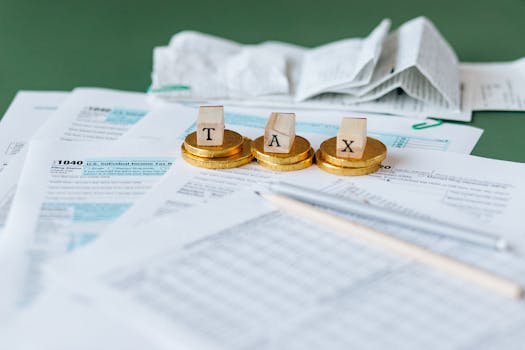Mastering the Art of Organizing Your Tax Documents and Receipts: Stress-Free Strategies for a Well-Managed Financial Life

M
anaging your financial records doesn't have to be a daunting task. With an organized system, you can turn the tide on tax season stress, ensuring all important documents and receipts are easily accessible when needed. This article explores practical strategies for maintaining order in your financial world, from categorizing receipts to digitizing paperwork for easy retrieval. By implementing these steps, you'll not only ease the burden come tax time but also ensure you're maximizing deductions and staying audit-ready year-round. A well-organized financial life is within reach; let's take that first step together.
One of the most common questions asked by prospective business owners is, "How do I organize my tax documents and receipts?" The answer begins with understanding what documents are necessary for tax preparation. These include income statements like W-2s or 1099s, expense receipts related to business operations, and records of any deductions you plan to claim. It's crucial to keep these documents in a secure location, whether physical or digital.
Another frequently asked question is, "How long should I keep my tax documents and receipts?" The IRS recommends keeping records for three years from the date you filed your original return or two years from the date you paid the tax, whichever is later. However, if you file a claim for credit or refund after you file your return, keep records for seven years.
Prospective business owners often wonder about the best way to categorize their receipts. One effective method is to sort them by expense type—such as office supplies, travel expenses, meals and entertainment—and then by date. This system allows for easy retrieval should you need to reference a specific expense.
Digitizing paperwork is another strategy that can simplify tax preparation. Many apps and software programs allow you to scan receipts and other documents directly into the system where they can be categorized and stored. This not only reduces physical clutter but also provides a backup in case of loss or damage to physical copies.
The question of how to stay audit-ready year-round is also common. The key is consistent organization. Regularly update your records and review them for accuracy. Keep a running tally of expenses and income, and cross-reference this with your bank statements to ensure everything aligns. This proactive approach can save you a significant amount of time and stress should an audit occur.
As we conclude, it's important to remember that organizing your tax documents and receipts is not a one-time task but an ongoing process. By implementing these strategies, you'll create a system that not only makes tax time less stressful but also helps you understand your business's financial health better.
In the end, the goal is to have a well-organized financial life. This not only eases the burden come tax time but also ensures you're maximizing deductions and staying audit-ready year-round. With a little effort and consistency, you can turn the tide on tax season stress and take control of your financial world. Remember, a well-organized financial life is within reach; all it takes is that first step.